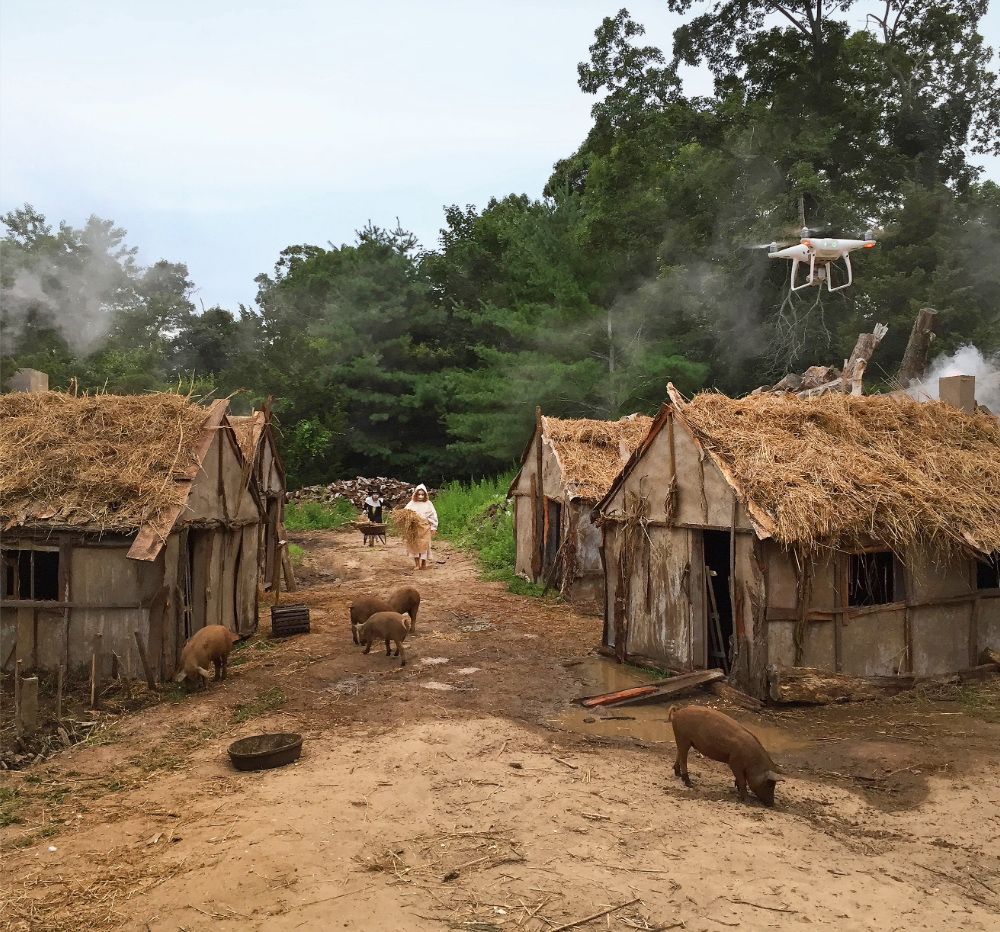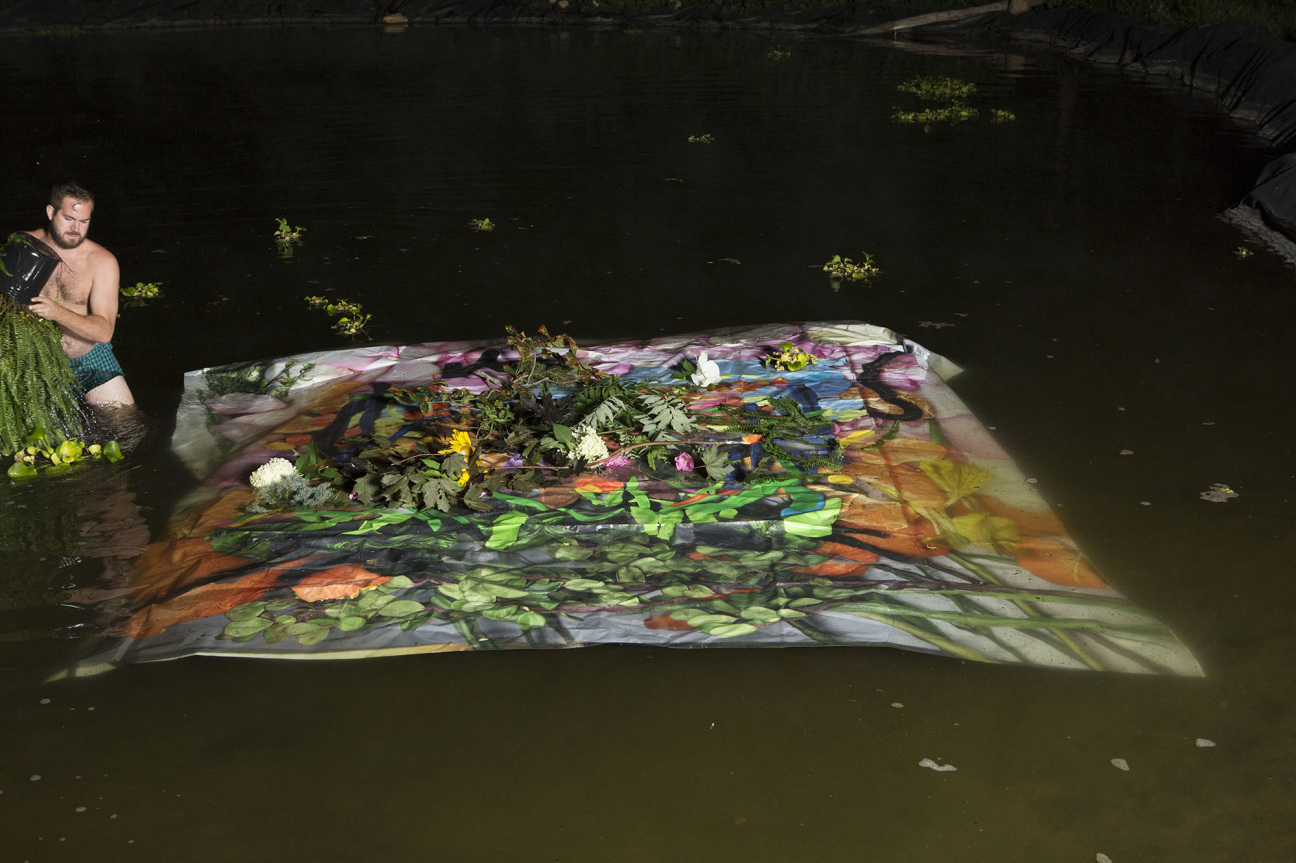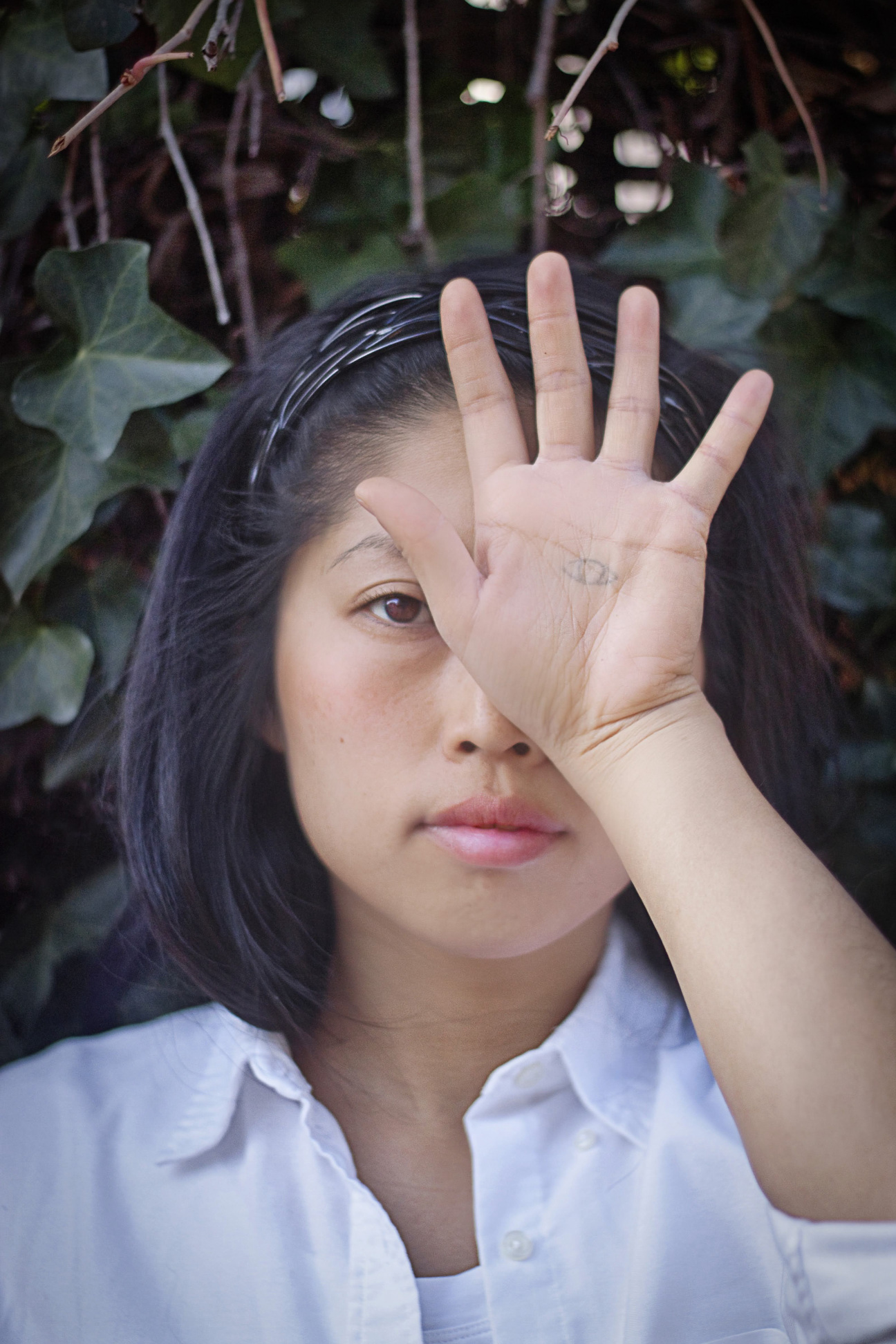
When his parents moved out of his childhood home in 2013, Tucker Marder transformed their late-19th-century Springs farmhouse into a creative oasis. The Folly Tree Arboretum, in addition to offering a collection of enticingly idiosyncratic foliage and a robust slate of public programming, welcomed its fourth cohort of resident artists this summer.
After Marder and his partner, Isla Hansen, both participated in a residency in Florida, the pair set about formalizing their own program. “We really wanted to promote those who were countering the overarching trend toward ecological hopelessness. We’re working optimistically and exuberantly,” he explains. “A few ideas that we wanted to make sure were part of the Folly Tree residency are: no expectations of finishing work, we pay artists to come, and we don’t have an application process."

The arboretum serves as an informal site of inspiration and meditation, or a studio fostering a series of new works. To ignite curiosity, Marder loves “taking residents to favorite walking spots, visiting special old trees, and surprising them with how weird and rural the East End can be.” He adds, “It’s very rewarding to share a place you know very well, and to see it through new eyes.”
This year, Miami-based sculptor and installation artist Lee Pivnik, Los Angeles-based media artist Alice Yuan Zhang, and DC-based community-engaged artist Naoco Wowsugi have made the trek out East. After only a few weeks among the trees, “the experience of time takes on a magical quality,” Wowsugi notes, “echoing Einstein’s notion that time is an illusion. Before the trio set off, CULTURED caught up with the artists to hear about their ambitions, evolving practices, and favorite foliage.

CULTURED: How would you characterize your practice?
Alice Yuan Zhang: I'm intrigued by the juxtaposition of technology and ecology, and how this constitutes what it means to be human across time and space. Past works have explored ethnobotany, somatics, memory, community networks, infrastructures, and materialism, culminating in various forms across mixed reality, browser-based, installation, visuals, writing, and public experiments. Most recently, I indulge in clay and language.
CULTURED: What are you most looking forward to at the residency?
Yuan Zhang: The arboretum extrudes a mythological potential in the postures and provenance of its trees. I appreciate the chance to steep in their presence and to make sketches and videos about this dynamic landscape.
CULTURED: What is your favorite tree?
Yuan Zhang: While on a research trip in rural India last year, thinking about the edge of the Internet, I met the banyan tree. I found its aerial roots and circular growth structure to be a powerful juxtaposition to the linear trajectory of techno-futurism.
CULTURED: How does an artist residency shift your practice, or allow you to create in a new way?
Yuan Zhang: To be in a different ecosystem, with its stewards, neighbors, and fellow residents, is to invite new observations, linkages, and contamination of ideas. As I strive to maintain a permeable practice that is inquiry-led, yet undefined by a particular lane or way of making, interdisciplinary residencies like Folly Tree Arboretum are crucial for expanding my vantage point. It also provides structured time for reorienting and cloud, tree, and creature watching.

CULTURED: How would you characterize your practice?
Lee Pivnik: In my work, I create a visual language for ecological entanglement. I live in Miami, Florida, an environmentally precarious city that is visibly connected to the changing landscapes around it. In my sculpture practice, I look for guidance from other species on how we might live in systems of reciprocity instead of extraction.
CULTURED: What are you most looking forward to at the residency?
Pivnik: I’m working towards an exhibition at Dale Zine in Miami that opens in October, and I’ll use this time at Folly Tree Arboretum to dive deeper into some of the research guiding the show. Recently, that looks like reading a lot of sci-fi (and cli-fi)—folks like Ursula K. Le Guin, Karen Russell, and Kim Stanley Robinson. I’m also converting my whole apartment right now into an aquaponics sculpture, so I’m looking forward to talking with Tucker about the complexities of transforming the private spaces we call home into more public venues for arts and culture.
CULTURED: What is your favorite tree?
Pivnik: Sorry, I don’t play favorites, so I gotta give two answers! Mangroves and strangler fig trees have both been resonating with me recently. Both are found in South Florida and hold such vibrant animacy. They practically crawl over landscapes. Mangroves begin life as floating seed pods before settling into the shallow salt flats and weaving tangled forests with their aerial roots. These forests are critical nurseries for birds and fish, and they help protect our cities from storm surges and erosion.
Strangler figs begin life as epiphytes in the crown of a host tree, and over time, their roots flow over the host until it’s “strangled” as the fig envelopes it. My favorites of these are the ones that consume old and abandoned buildings to create strange symbiotic arbor-tectures.
CULTURED: How does an artist residency shift your practice, or allow you to create in a new way?
Pivnik: Residencies are all so different that it’s hard to anticipate how my practice will evolve through the experience. I’ve done residencies more focused on fabrication, like one at Atlantic Center for the Arts, where I worked on a single sculpture that later sparked a series of treehouse-inspired works for my show “Epiphyte” with Good Enough in Atlanta.
Separately, I’ve done more research-based residencies, like one I kind of crafted for myself at Biosphere 2 in Oracle, Arizona, where I spent two months learning about the design decisions that went into constructing their sprawling artificial biomes. This work manifested as a show on site but continues to resonate with the more architectural projects I’m currently engaged in. All I hope is that my time at Folly Tree Arboretum is just as unpredictably fruitful!

CULTURED: How would you characterize your practice?
Naoco Wowsugi: I am a community-engaged artist who seamlessly merges the roles of an artist and an engaged citizen. My practice is rooted in the belief that art can be a synergetic force for healing, learning, and connecting. In recent years, I have closely collaborated with hyperlocal communities, drawing inspiration from the principles of bioregionalism. This approach examines how natural environments influence the livelihoods and relationships among local cultures and people.
By understanding and incorporating these dynamics into my work, I strive to create projects that reflect and strengthen everyday communal and interpersonal identities. By focusing on these communities, I aim to foster a sense of belonging and inclusivity, highlighting the unique identities and stories that make up these neighborhoods.
CULTURED: What are you most looking forward to at the residency?
Wowsugi: I strive to synergize the wisdom the local flora, fauna, and fungi offer us. The residency's unique setting will allow me to immerse myself in the rich ecosystem and distinctive landscape of East Hampton. I am particularly excited to research the concept of the "Mother Tree," which explores the intricate and vital role of central trees within forest ecosystems in nurturing and sustaining other plants.
This research aligns perfectly with my ongoing exploration of interconnectivity and community within natural and human environments. Additionally, I am eager to incorporate my interests and experiences as a birth doula, investigating parallels between the nurturing roles in human communities and ecosystems within this arboretum.
CULTURED: What is your favorite tree?
Wowsugi: This is a tough question … when the forest is valued as a whole! While my last name, Wowsugi, means a big cedar tree, I actually have a soft spot for the poplar tree. I adore the enchanting shape of its leaves.
CULTURED: How does an artist residency shift your practice, or allow you to create in a new way?
Wowsugi: [At Folly Tree] the experience of time takes on a magical quality, echoing Einstein's notion that time is an illusion. This environment, accessible only by invitation, amplifies this magical essence, fostering a sense of relaxation and openness within me. The fact that they invited me based on a connection they found with my work and projects makes me feel exceptionally welcome and valued. I don't feel the need to prove my worth; instead, I can focus wholeheartedly on exploring new ideas and approaches. This deep sense of acceptance and belonging liberates my creativity, allowing me to delve into my art with authenticity and freedom.
Moreover, the residency encourages dialogue and exchange with fellow artists and the natural world of the arboretum. This interaction sparks new perspectives and inspires collaborative projects that enrich my artistic practice. By immersing myself in this supportive and nurturing environment, I can create in a way that is both deeply personal and connected to broader themes of nature, community, and human experience.










 in your life?
in your life?

